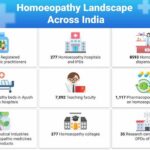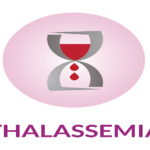With input from Dr Monica Vasudev
Minutes of Virtual Meeting of CMAAO NMAs on “COVID-19 Update”
India
healthysoch
Round Table Expert Zoom Meeting on “Role of thymus in enhancing immunity against COVID-19” :29th August, 2020, 11am-12noon
Participants: Dr KK Aggarwal, Dr AK Agarwal, Dr Suneela Garg, Dr Jayakrishnan Alapet, Dr DR Rai, Dr Tripathi, Dr Angeli Misra, Dr Atul Pandya, Prof Bejon Misra, Dr Anil Kumar, Mrs Upasana Arora, Ms Ira Gupta, Dr S Sharma
Faculty: Dr Jagat Kaul
Director Prof and Former Head, Dept. of Anatomy, Maulana Azad Medical College, New Delhi
Consultant Academics and Advisor, Baba Saheb Ambedkar Medical College, Govt. of Delhi
Key points from the discussion
- Thymus is the primary lymphoid organ besides bone marrow and provides T lymphocytes to the whole body. It provides specificity of T cell responses and immune tolerance to self.
- It influences and is influenced by products of neuroendocrine axis of the body.
- Thymus varies at different stages of life under the influence of different physiological and pathological states.
- The shape of thymus is molded to the adjacent structures and weighs about 20 gm in adults. It is reddish in color and becomes yellowish with advancing age due to adipose infiltration at the cost of active lymphoid tissue. The older thymus can be distinguished from surrounding mediastinal fat only by the presence of the capsule, which covers the gland.
- The thymic microstructure consists of cortex (thymocytes) and the medulla (epithelial cells, lymphocytes). The blast cells in the subcapsular cortex do not express any marker.
- Type 1 cells are subcapsular and attract blast cells from bone marrow by way of their negative surface charge. Type 6 cells are commonest and form thymic hormone.
- Hassall’s corpuscles start to form in the intrauterine life and are very well established by the 5thmonth of intrauterine life; they increase with age.
- The T lymphocytes carry out cell mediated defence actions by their effector and controlling actions.
- Via the effector action, they directly kill by cytotoxic substances (which release toxic lysosomal proteins) and indirectly by cytotoxins. Through the controlling action, they induce or suppress immune responses in B and T lymphocytes or any other variety of cells derived from the bone marrow. It can also cause delayed hypersensitivity response causing release of cytokines, which stimulate phagocytosis and chemotaxis.
- The natural killer cells are devoid of T cell receptors and are not restricted by MHC protein.
- Suppression cells are certain T cells, which when stimulated, suppress the activity of B cells and other T cells.
- There is a fine balance between positive and negative controls in the T cell system, which is lost in COVID-19.
- The thymic hormones (thymulin, thymosin, thymopentin, thymic humoral factor) exert immunomodulatory effects on maturation of lymphocytes and induce markers of early differentiation on lymphoid cells and enhance function of T cells. Thymulin relies on zinc for its biological action.
- Thymocytes secrete IL-1, 2, 4, 6; thymic epithelium secretes IL-1, 3, 4, 6, 7.
- Non lymphocytic thymic cells are cells of mononuclear phagocytic system in the form of monocytes and interdigitating cells. They present antigens to T cells as they move from cortex to medulla.
- Hormones can affect thymic function and thymic factors often affect other endocrine organs.
- Thymocytes have receptors for corticosteroids, oxytocin and estrogens.
- High levels of corticosteroids kill cortical lymphocytes and low steroid levels have a thymopoietic effect.
- The thymus increases in weight up to the first year of life, then the weight remains fairly constant at around 20 g until the 6thdecade of life, and then the weight starts reducing.
- Pathogens may be more infective and prevalent in the elderly, yet may affect the young also; these are gerophilic in nature.
- Infections including COVID-19 are gerolavic. It has been seen that older adults were at greater risk of serious illness due to COVID-19 compared to children.
- Emerging research has shown that there is a marked decrease in the number of T cells in some seriously ill patients.
- It seems that the entire process of COVID-19 (T cells, IL-6, CD4) is directly or indirectly linked to the thymus.
- The role of T and B lymphocytes has opened up vistas of knowledge. It has helped to understand memory, tolerance, autoimmunity, immunodeficiency as well as inflammatory and immunopathological phenomenon.
- Recent investigations have highlighted the role of increased proinflammatory cytokines, impaired type 1 interferon response and functional exhaustion of anti-viral lymphocytes in the elderly.
Author : Dr KK Aggarwal, President CMAAO, HCFI and Past National President IMA
healthysoch







